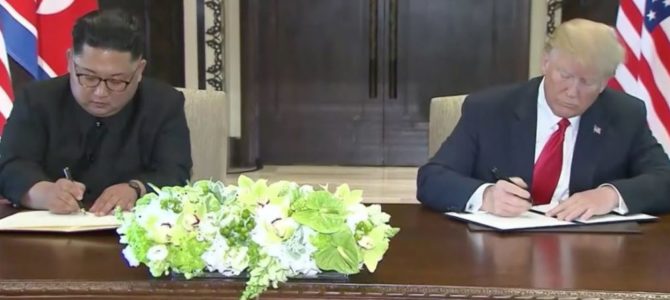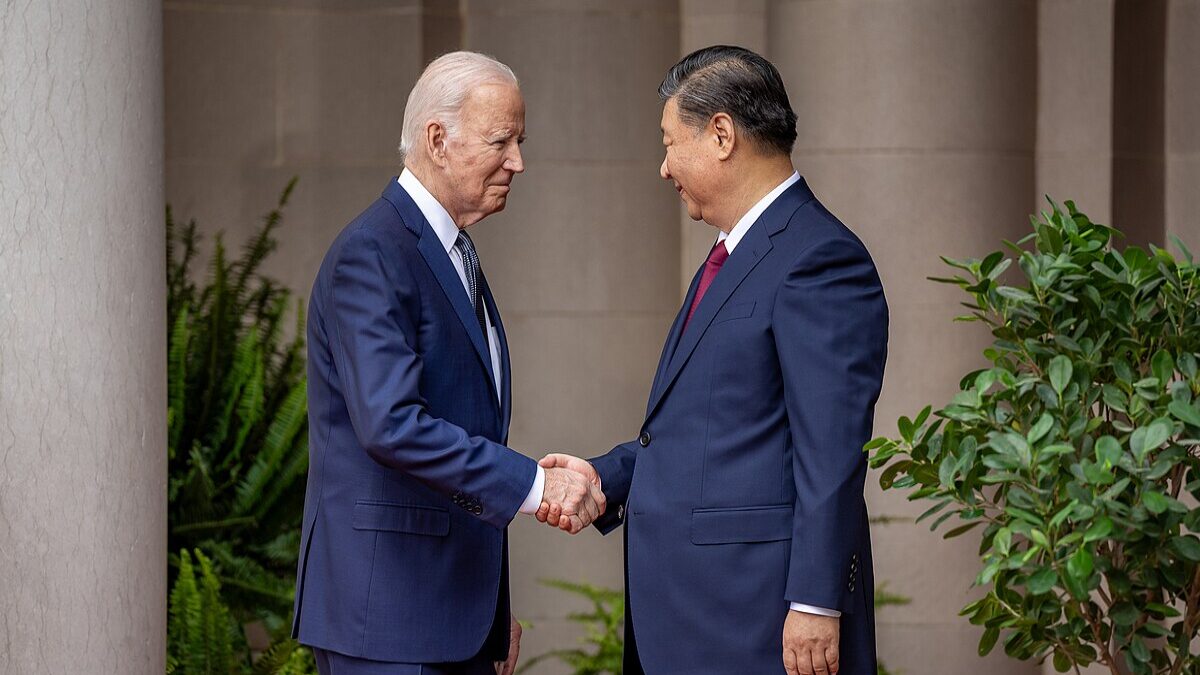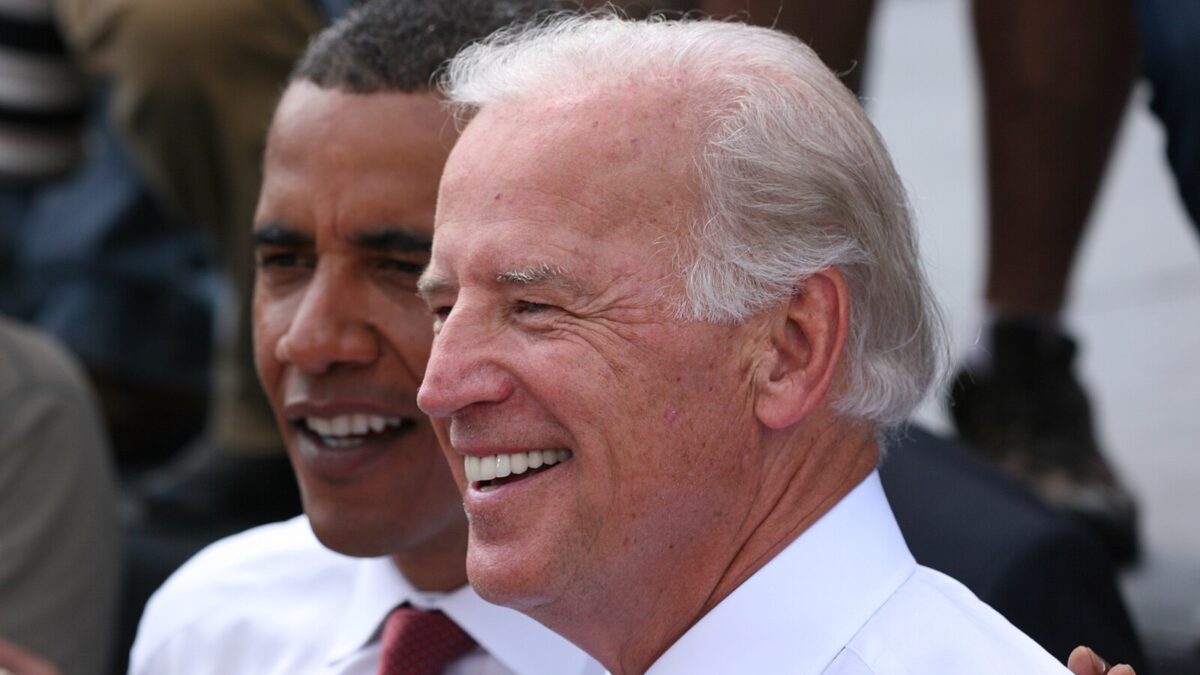
Secretary of State Mike Pompeo concluded his two-day talk with Pyongyang last weekend. His trip was a follow up to the historic summit between President Trump and North Korean dictator Kim Jong Un in Singapore on June 12. While Pompeo seemed to believe he made some progress, the North Korean regime offered a sharply different takeaway.
A statement issued by Pyongyang called the result of the meeting “regrettable,” and accused Pompeo of making a “unilateral and gangster-like demand for denuclearization … which run counter to the spirit of the Singapore summit meeting and talks.” In truth, however, the only party who behaved gangster-like and has done things that ran counter to the Singapore summit is Kim himself.
Kim Jong-un commits DPRK “to work toward complete denuclearization of the Korean Peninsula” in the broad joint statement issued at the summit. Trump was so confident that North Korea would begin “total denuclearization” right away that he immediately offered to halt the joint military exercise with South Korea, without Kim agreeing to any specific steps and timeline towards the denuclearization. The day after the summit, Trump tweeted, “There is no longer a Nuclear Threat from North Korea.”
A month later, Trump insists that progress has been made, because there haven’t been any North Korean missile or nuclear tests in recent months. But while the absence of these tests is a welcome sign, North Korea has made little progress toward “total denuclearization.” Instead, recent events suggest Kim Jong Un didn’t intend to keep his word, and simply fooled the U.S. and the rest of world, like his father and grandfather did.
First, new satellite images show Pyongyang has made swift improvements to the infrastructure at its Yongbyon Nuclear Scientific Research Center, and increased its production of enriched uranium for nuclear weapons. Second, recent evidence gathered by South Korea’s military suggests Pyongyang is working on a new submarine capable of launching nuclear-armed ballistic missiles.
Third, North Korea is gearing up for its annual summer military exercise, notwithstanding Trump’s announcement halting the U.S. and South Korea’s joint military exercise. Fourth, Kim promised the immediate repatriation of the already identified remains of U.S. POWs in Singapore. But the Defense Department is reportedly still waiting for the remains, with no explanation for the delay.
The way North Korea handled Pompeo’s weekend trip was the most troubling sign. He and his team had little idea of his schedule in North Korea, Bloomberg reported. They didn’t know whether he would meet Kim this time (they didn’t), or even which hotel they would stay in. North Korea took control of the agenda from beginning to end. When pressed by Pompeo for concrete steps toward denuclearization, Pyongynag dared to slam the U.S. for making “ganster like” demands. All these are signs that it has been business as usual in North Korea, and that no significant steps have been taken toward denuclearization since the June summit.
Some have suggested Pyongyang’s latest flip flop is an often used negotiation tactic to push for concessions. But these revelations beg the question: Was the Singapore summit a failure? It’s still a bit early to declare it a failure. But the Trump administration should be concerned given North Korea’s long history of deception.
As early as 1992, under Kim Il Sung, grandfather of Kim Jong un, North Korea and South Korea signed the Joint Declaration on Denuclearization of the Korean Peninsula. Pyongyang promised: 1) not to test, manufacture, produce, receive, possess, store, deploy or use nuclear weapons; 2) not to use nuclear energy solely for peaceful purposes; 3) not to possess nuclear reprocessing and uranium enrichment facilities. All these sounded good on paper but turned out to be empty promises.
Merely a year later, North Korea rejected inspections by the International Atomic Energy Agency and announced its intention to leave the Nuclear Nonproliferation Treaty. Rather than being punished, Pyongyang’s temper tantrum was quickly rewarded by a visit from former President Jimmy Carter in 1994, which paved the way for bilateral negotiations between the U.S. and North Korea.
In October 1994, the U.S. and North Korea signed an agreement, in which, Pyongyang “committed” to freeze its nuclear weapons program and halt construction on nuclear reactors. In exchange, the U.S. would provide sanction relief, economic aid, energy and two light-water reactors for civilian use. At the time, the CIA estimated that North Korea probably had possession of one or two nuclear weapons.
Kim Jong Il, Kim Jong Un’s father, continued to play the same game. He took advantage of South Korea’s “sunshine policy” in 2000 and extracted economic aid, including badly needed fuel and food from both South Korea and the U.S. Kim Jong Il even toasted Secretary of State Madeleine Albright in October that same year.
Yet merely two years later, after satellite images caught North Korea red-handed, Pyongyang admitted that it had been running a secret uranium-enrichment program to power nuclear weapons and it would reactivate its nuclear plant in Yongbyon. North Korea also officially withdrew from the Nuclear Nonproliferation Treaty.
Rather than being punished for its clear violation of the agreement with the U.S. and South Korea, North Korea was offered another chance through the “Six Party Talks.” Through these talks, North Korea received more aid, which ended up sustaining the regime and furthering its nuclear weapons development program.
We’ve seen this cycle happen too many times in the last three decades. Every administration in the U.S. thought they knew better than the previous administration on how to deal with North Korea. Yet, they all ended up being fooled by the Kim family and walking away with nothing but plenty of frustration. In the meantime, North Korea continues its steadfast march toward becoming an undeniable nuclear power.
By now, it is estimated North Korea has possession of 30-60 nuclear weapons. Besides being a threat to U.S. allies, such as South Korea and Japan, today’s North Korea also poses a security threat to the U.S. mainland, after it successfully tested several intercontinental ballistic missiles (ICBM) last year. ICBM’s are capable of carrying nuclear warheads.
The U.S. should never underestimate Kim’s maliciousness and subterfuge. He is following the same strategy deployed by his father and grandfather but with a bigger ambition. Unlike his father and grandfather, Kim is not satisfied with temporary economic relief through negotiations. He has visited China three times so far this year.
I suspect he wants to see North Korea be more like China, a totalitarian state with a strong economy and also an accepted nuclear power by the global community. China achieved its status by developing its own nuclear weapons first, then having limited economic reforms and engaging the rest of the world, especially the U.S., through trade and foreign investment, while maintaining a strict one-party rule and iron-clad ideological control of Chinese people.
Kim is following China’s playbook. He wants the rest of the world especially the U.S. and South Korea to help him improve North Korea’s economy by pouring in investment. At the same time, he wants to maintain he and his family’s ruthless control of North Korea and its people. Like his father and grandfather, Kim has no intention of giving up nuclear weapons, because these are the guarantee of he and his regime’s survival.
While Kim is copying from China, the U.S. should also learn from China’s rise that economic developments don’t necessarily bring welcome political changes. A rich totalitarian regime is more dangerous and is capable of causing more harm than a poor one.
The true gangster the world is facing in the Korean Peninsula is North Korea. The U.S. and South Korea should have a clear eye with whom they are dealing. The only language a gangster understands is a bigger fist than his. The Trump administration should take stock of the lessons learned from Singapore and adjust its strategies by immediately doing three things.
First, resume joint military exercise with South Korea. Second, continue to apply maximum economic sanctions and punish any country or entities who break the sanctions without consulting the U.S. first. Third, the U.S. should provide next steps and a time table for North Korea’s denuclearization, rather than letting Kim dictate them. Last but not least, let’s go back to referring to Kim as the “little rocket man.” Calling him “Chairman Kim” offers him too much legitimacy he doesn’t deserve.
Trump should be especially careful not to let the “little rocket man” school him at the art of the deal.









